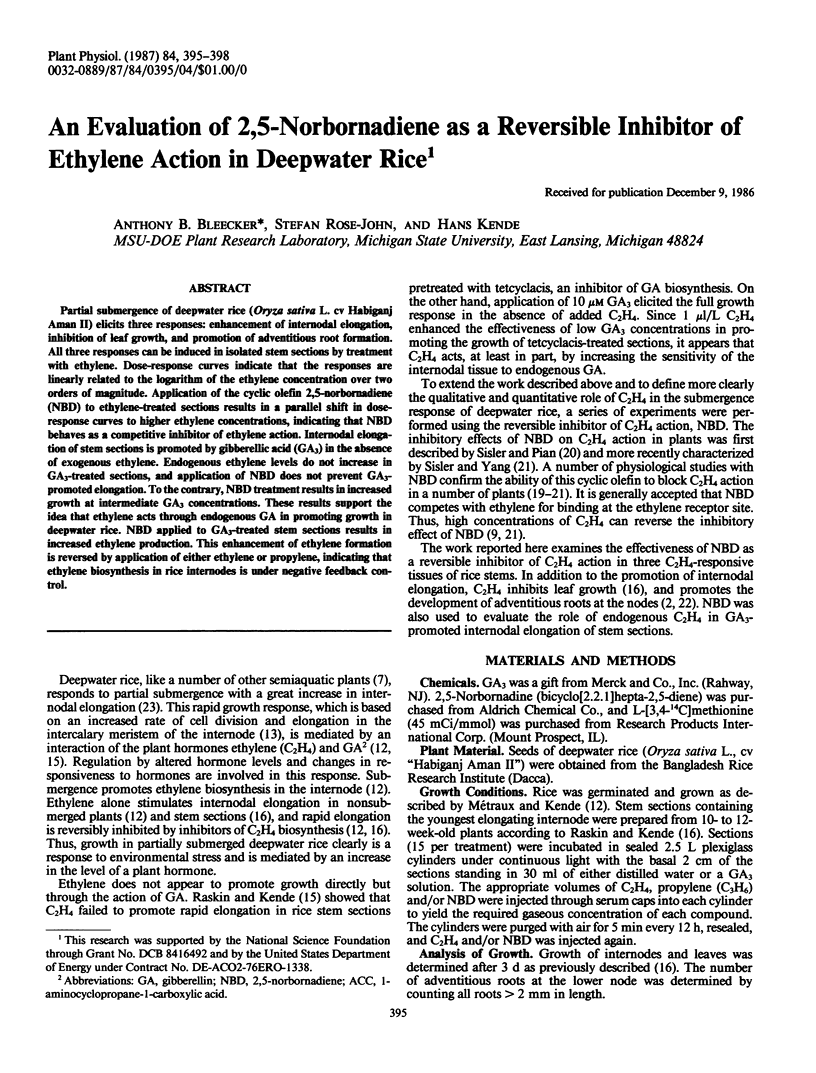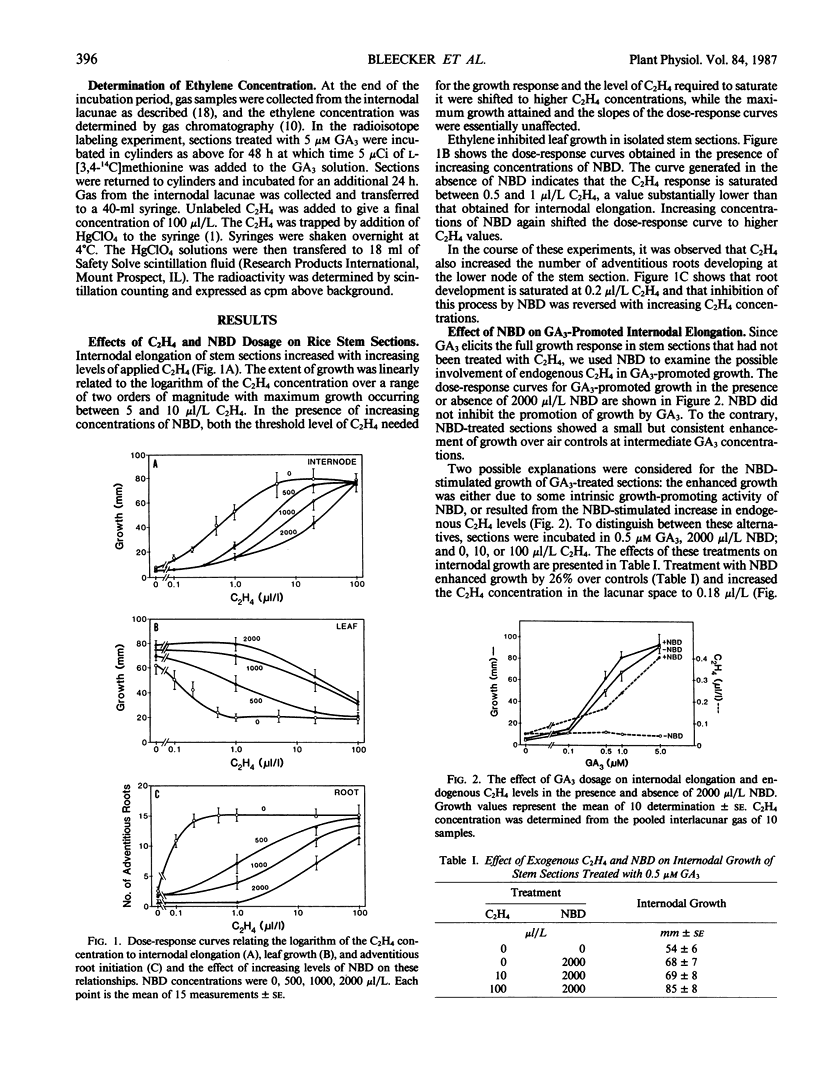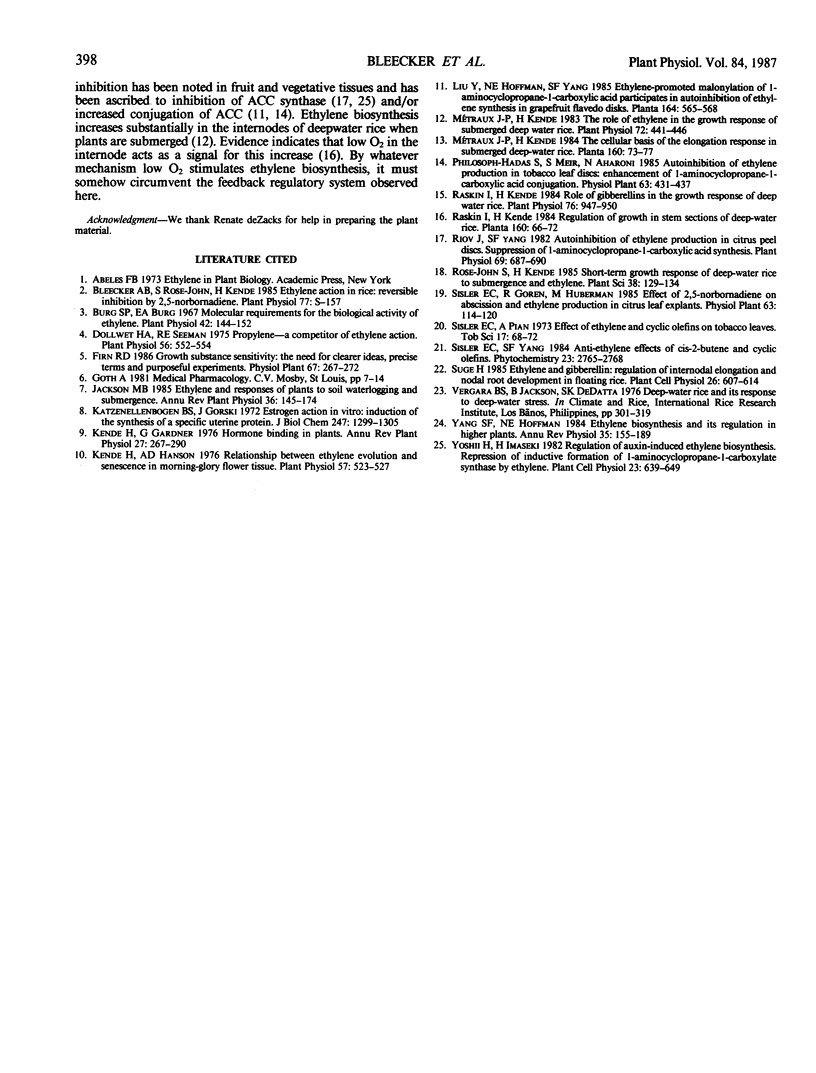Abstract
Partial submergence of deepwater rice (Oryza sativa L. cv Habiganj Aman II) elicits three responses: enhancement of internodal elongation, inhibition of leaf growth, and promotion of adventitious root formation. All three responses can be induced in isolated stem sections by treatment with ethylene. Dose-response curves indicate that the responses are linearly related to the logarithm of the ethylene concentration over two orders of magnitude. Application of the cyclic olefin 2,5-norbornadiene (NBD) to ethylene-treated sections results in a parallel shift in dose-response curves to higher ethylene concentrations, indicating that NBD behaves as a competitive inhibitor of ethylene action. Internodal elongation of stem sections is promoted by gibberellic acid (GA3) in the absence of exogenous ethylene. Endogenous ethylene levels do not increase in GA3-treated sections, and application of NBD does not prevent GA3-promoted elongation. To the contrary, NBD treatment results in increased growth at intermediate GA3 concentrations. These results support the idea that ethylene acts through endogenous GA in promoting growth in deepwater rice. NBD applied to GA3-treated stem sections results in increased ethylene production. This enhancement of ethylene formation is reversed by application of either ethylene or propylene, indicating that ethylene biosynthesis in rice internodes is under negative feedback control.
Full text
PDF



Selected References
These references are in PubMed. This may not be the complete list of references from this article.
- Burg S. P., Burg E. A. Molecular requirements for the biological activity of ethylene. Plant Physiol. 1967 Jan;42(1):144–152. doi: 10.1104/pp.42.1.144. [DOI] [PMC free article] [PubMed] [Google Scholar]
- Dollwet H. H., Seeman R. E. Propylene-a competitor of ethylene action. Plant Physiol. 1975 Oct;56(4):552–554. doi: 10.1104/pp.56.4.552. [DOI] [PMC free article] [PubMed] [Google Scholar]
- Katzenellenbogen B. S., Gorski J. Estrogen action in vitro. Induction of the synthesis of a specific uterine protein. J Biol Chem. 1972 Feb 25;247(4):1299–1305. [PubMed] [Google Scholar]
- Kende H., Hanson A. D. Relationship between Ethylene Evolution and Senescence in Morning-Glory Flower Tissue. Plant Physiol. 1976 Apr;57(4):523–527. doi: 10.1104/pp.57.4.523. [DOI] [PMC free article] [PubMed] [Google Scholar]
- Métraux J. P., Kende H. The role of ethylene in the growth response of submerged deep water rice. Plant Physiol. 1983 Jun;72(2):441–446. doi: 10.1104/pp.72.2.441. [DOI] [PMC free article] [PubMed] [Google Scholar]
- Raskin I., Kende H. Role of gibberellin in the growth response of submerged deep water rice. Plant Physiol. 1984 Dec;76(4):947–950. doi: 10.1104/pp.76.4.947. [DOI] [PMC free article] [PubMed] [Google Scholar]
- Riov J., Yang S. F. Autoinhibition of Ethylene Production in Citrus Peel Discs : SUPPRESSION OF 1-AMINOCYCLOPROPANE-1-CARBOXYLIC ACID SYNTHESIS. Plant Physiol. 1982 Mar;69(3):687–690. doi: 10.1104/pp.69.3.687. [DOI] [PMC free article] [PubMed] [Google Scholar]


